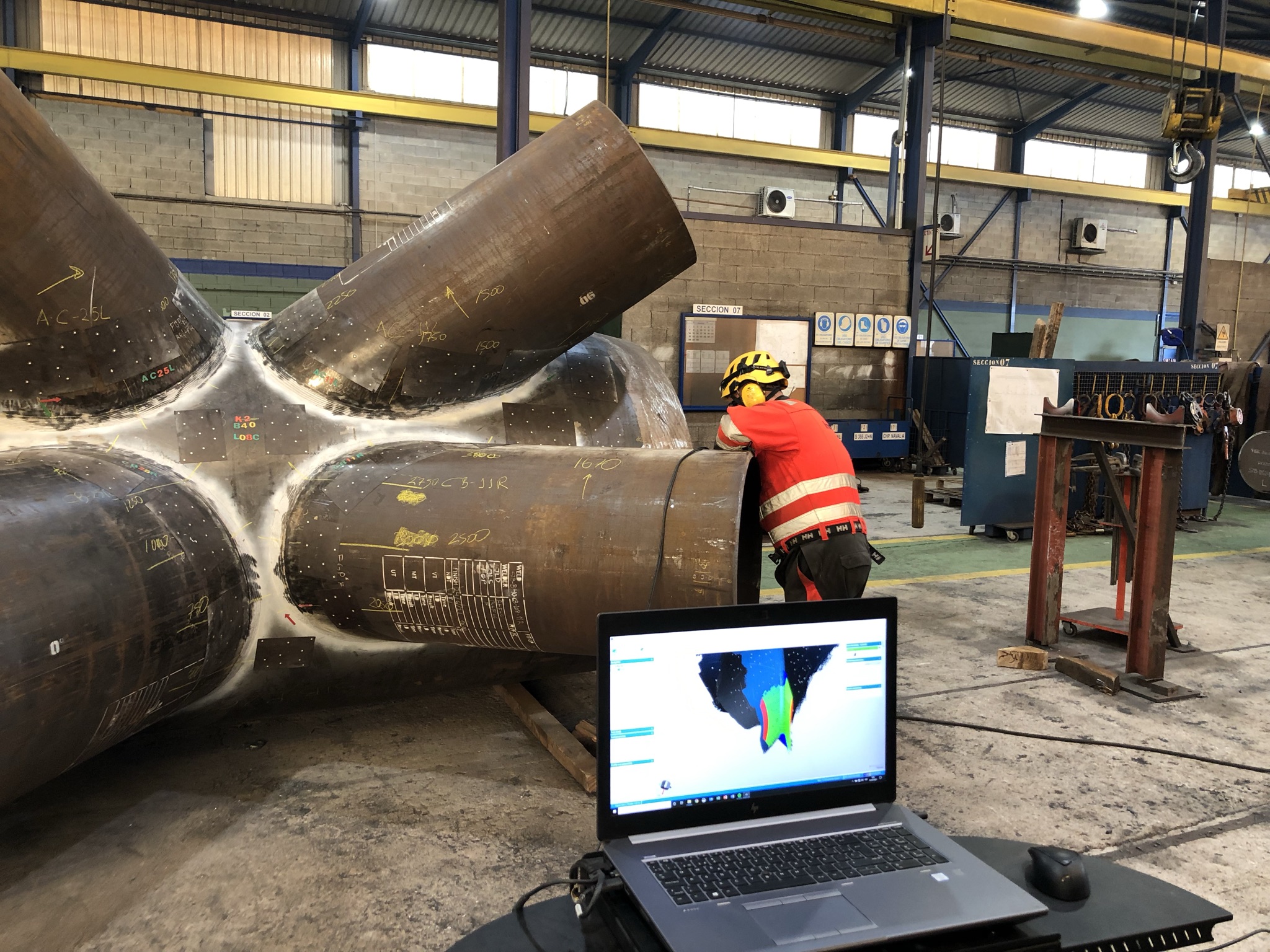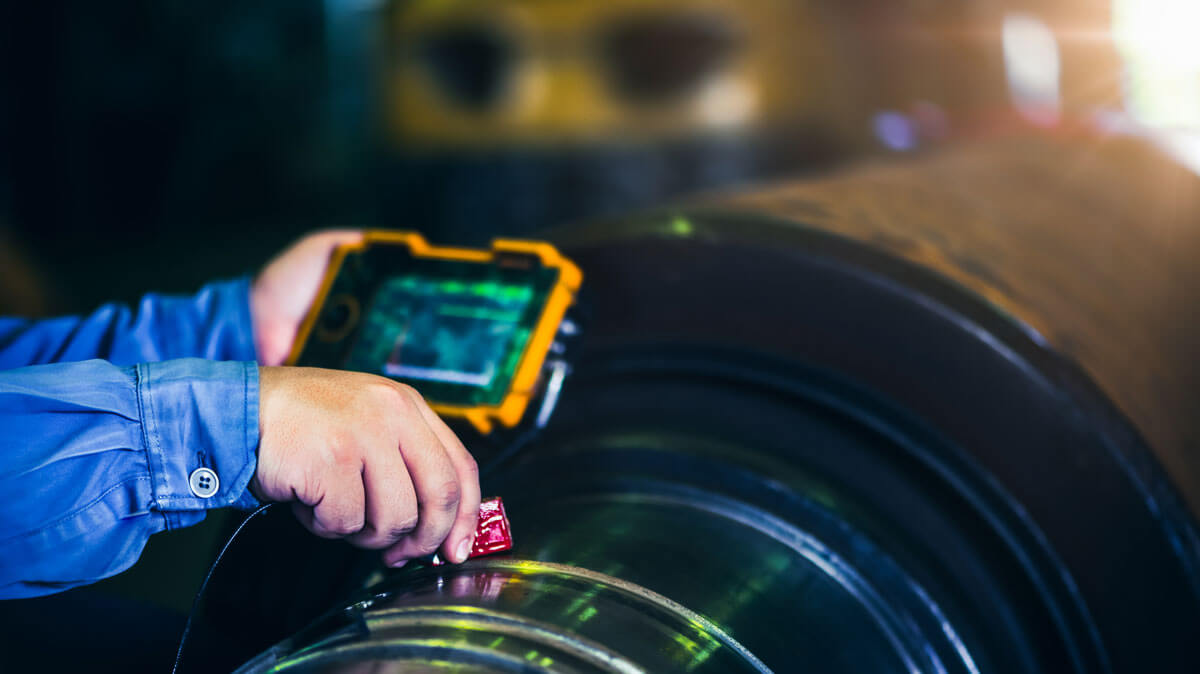Comprehending the Relevance of Welding Inspection in Ensuring Structural Stability
Welding inspection plays an essential duty in maintaining structural honesty within the building industry, functioning as a critical secure versus potential failures. By systematically recognizing common problems-- such as porosity and insufficient fusion-- evaluations not just copyright quality requirements yet additionally ensure compliance with security guidelines. The effects of neglecting this vital procedure expand past prompt safety and security concerns, impacting both the durability of structures and the general online reputation of companies. As we discover the numerous inspection techniques and their benefits, the question arises: what are real costs of neglecting this important element of building?
Duty of Welding in Building And Construction

Along with structural applications, welding is essential in the construction of both complex and large-scale components. It allows for the personalization of components, allowing engineers and designers to bring their layouts to fulfillment. The convenience of welding techniques, including MIG, TIG, and arc welding, allows for the effective joining of different materials and thicknesses, satisfying specific project demands.
In addition, the advancement of welding technologies has actually brought about boosted performance and accuracy in building processes. Automated welding systems improve productivity while decreasing human error, thereby promoting better results. The duty of welding in construction extends past simple assembly; it is an essential aspect in guaranteeing the safety, long life, and overall honesty of frameworks, highlighting its importance in the modern-day building landscape.
Common Welding Issues
The stability of welded frameworks is significantly affected by the presence of issues that can compromise their performance and safety and security. Common welding flaws consist of porosity, incomplete combination, damaging, and slag inclusions, each of which can badly influence the general stamina and resilience of welded joints.
Porosity takes place when gas bubbles are trapped in the weld metal, bring about lowered tensile strength. Incomplete combination emerges when the weld metal does not correctly bond with the base steel, causing weak joints vulnerable to failure. Undercutting, a groove that forms beside the weld, can minimize the reliable cross-sectional location, raising the risk of fracture. Slag additions happen when non-metallic products end up being caught in the weld, bring about stress and anxiety focus factors that might launch cracks.
Other defects, such as too much spatter and imbalance, can additionally add to architectural weak points. Determining and attending to these problems during the welding process is crucial to ensure the integrity of the last framework. Recognition of these common welding problems is important for inspectors and engineers to keep the honesty of welded structures and ensure lasting security and performance.
Advantages of Welding Examination
Making certain the stability of welded frameworks depends heavily on the performance of welding assessment processes. The key advantage of welding evaluation is the very early discovery of potential issues, which can substantially decrease the risk of disastrous failures. By recognizing problems such as cracks, insufficient blend, or porosity prior to they escalate, assessment procedures aid maintain the safety and security and dependability of frameworks.
Additionally, welding inspection improves conformity with sector requirements and regulations. Sticking to these requirements is vital for avoiding lawful repercussions and making sure that jobs meet needed safety and security protocols. This conformity additionally fosters a society of quality control, promoting ideal practices among welding workers.
In addition, regular assessment can bring about cost savings gradually. By minimizing the likelihood of rework or repair services as a result of welding defects, organizations can assign resources a lot more successfully, inevitably enhancing productivity.

Examination Methods and Criteria
Efficient examination techniques and requirements are essential elements of preserving the integrity of welded structures. Usual examination methods consist of visual evaluation, ultrasonic screening, radiographic screening, and magnetic fragment testing.
Visual evaluation is typically the initial action, allowing examiners to determine surface area flaws such as splits or improper bead shapes. Ultrasonic testing employs high-frequency sound waves to discover internal defects, while radiographic screening uses X-rays or gamma rays to expose hidden variances within the weld. Magnetic fragment testing is efficient for identifying surface area and near-surface defects in ferromagnetic materials.
Specifications play a crucial role in guiding these inspection processes, with companies such as the American Welding Culture (AWS) and the International Company for Standardization (ISO) supplying detailed standards. Compliance with these standards not just makes sure the high quality of welds however likewise fosters trust amongst stakeholders in the architectural stability of the completed product. Complying with well-known assessment methods and standards is basic to accomplishing dependable and long-lasting bonded structures.
Regulatory Compliance and Safety And Security
Regulative compliance is essential for securing the safety and honesty of bonded structures. Following well established codes and requirements, such as those established by the American Welding Culture (AWS) and the American National Standards Institute (ANSI), makes certain that welding methods meet rigorous security and top quality demands. These navigate here regulations are created to avoid failings that might lead to disastrous incidents, injuries, or death.
Compliance with these guidelines involves routine inspections and evaluations throughout the welding procedure. Licensed assessors evaluate welds for high quality, strength, and adherence to specifications, making sure that any see here now kind of inconsistencies are quickly resolved. This proactive method not just boosts the structural stability of bonded parts but also alleviates threats associated with non-compliance.
Additionally, regulative bodies typically need documents of inspections and compliance records, which function as lawful evidence of adherence to safety and security criteria. Companies that prioritize regulatory compliance not only safeguard their workforce and clients but also improve their track record within the market. Inevitably, understanding and applying these laws is crucial for any organization intending to keep high safety and security criteria and attain lasting functional success in welding techniques.
Verdict
To conclude, welding examination plays a crucial function in preserving structural integrity within the construction sector. By recognizing typical flaws such as porosity and incomplete fusion, inspections promote very early treatment, promoting quality guarantee and conformity with industry standards. The execution of different evaluation techniques not just improves safety and security however also adds to the general sustainability and credibility of construction techniques. Eventually, a commitment to strenuous welding evaluation go to my site is important for safeguarding both the labor force and the integrity of created structures.
The convenience of welding techniques, consisting of MIG, TIG, and arc welding, allows for the efficient signing up with of different products and densities, providing to particular task requirements.
Making sure the integrity of welded frameworks counts heavily on the performance of welding inspection processes (Welding Inspection Milwaukee). In recap, the advantages of welding evaluation are diverse, crucial for ensuring structural honesty and functional excellence

Adhering to well established codes and criteria, such as those established by the American Welding Society (AWS) and the American National Criteria Institute (ANSI), guarantees that welding methods fulfill rigorous safety and security and quality needs. Ultimately, a commitment to rigorous welding evaluation is vital for securing both the labor force and the stability of built frameworks.